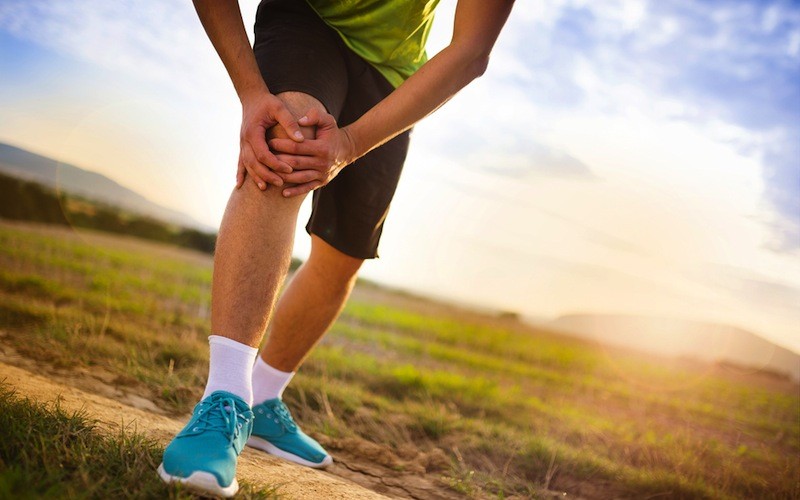Arthritis affects millions of people around the world and thousands of people in the United States are diagnosed with arthritis each year. It’s safe to conclude that a vast majority of your patients struggle with arthritis. Due to the fact there’s no exact cure that will make arthritis go away, most people are discouraged and believe there’s nothing they can do to manage symptoms they experience. Fortunately, there are numerous things they can do to manage the pain they feel with your guidance. Here are 7 easy and effective tips you can recommend.
-
Weight loss
Being overweight or obese plays a big impact on the amount of pain an individual experiences. It happens due to the fact that the excess weight forms a bigger pressure on the joints. Furthermore, overweight and obesity are one of major risk factors for developing arthritis. For example, Lu B. and team of scientists of the Harvard Medical School in Boston conducted a study to inspect the link between excessive weight and rheumatoid arthritis (RA). Results of the study, published in the Annals of the Rheumatic Diseases, showed that risks for RA were elevated among overweight and obese women who participated in this study.
One of the most important things to recommend patients who are dealing with arthritis is to reduce stress on their joints. Weight loss will reduce the pain, improve mobility, and decrease further damage to the joints.
-
Using hot and cold packs
This is one of the oldest tricks in the book, but it’s worth of mentioning. A patient can easily relieve the intensity of the arthritis joint pain by applying ice pack onto the affected area. Ice packs reduce pain and swelling by numbing the painful joint and constricting blood vessels. It’s also important to emphasize that before applying ice pack onto the affected area, the patient should wrap into a towel or a washcloth.
On the other hand, when dealing with stiff joints and muscles, particularly in the morning, an effective way of relieving stiffness includes applying hot compresses. Heat relaxes stiff joints and muscles thus allowing patient to move more easily. It can also be a good way of relieving pain.
TIP: don’t forget to mention they shouldn’t apply hot compresses or ice packs for more than 20 minutes at a time.
-
Practicing tai chi
This Chinese martial art has numerous benefits including positive effects on arthritis management. For instance, Uhliq T. and team of scientists of the Diakonhjemmet Hospital from Oslo, Norway to inspect effects of tai chi on patients with rheumatoid arthritis (RA). The study included 15 participants (13 women and 2 men) aged between 33 and 70. Participants were instructed in tai chi exercise twice a week for 12 weeks. Results of the study, published in the BMC Musculoskeletal Disorders, showed that tai chi improved lower-limb muscle function, physical condition, mobility, and less pain.
-
Acupuncture
Acupuncture is a form of alternative medicine. It’s characteristic for the traditional Chinese medicine and has been used for more than 2000 years to treat various health problems. Besides a wide array of health benefits, acupuncture is also linked with decreased arthritis pain. It’s assumed that acupuncture diminishes pain by “untying muscular straitjackets” i.e. by releasing tight, shortened, spasmed, muscles to their resting state.
Only a few studies have been conducted to examine benefits of acupuncture in relieving arthritis pain and they offered limited, but promising results. For example, Berman B.M. and research group at the University of Maryland School of Medicine examined effects of acupuncture on participants with osteoarthritis (OA). Results of the study, published in the Annals of Internal Medicine, discovered that acupuncture seems to provide improvement in function and pain relief as an adjunctive therapy for people with OA.
Although some experts still have doubts about this type of relieving arthritis pain, the fact is that a number of arthritis sufferers report significant improvement after acupuncture sessions. It’s, definitely, worth it to recommend this practice as complementary treatment.
-
Omega 3 fatty acids intake
Omega 3 fatty acids are essential for overall health and wellbeing and it turns out – they can help manage arthritis as well. Seminars in Arthritis and Rheumatism study conducted by Ariza-Ariza R. and team of scientists of the National Institute of Nutrition Salvador Zubiran from Mexico City revealed that Omega 3 fatty acids showed improvements in some outcome measures in RA. Scientists expressed the importance of completing new studies on this subject in order to determine whether Omega 3 fatty acids supplements can represent an alternative to medications used for arthritis.
Best sources of Omega 3’s are salmon and other fatty fish and seafood as well as some walnuts, flax seeds etc. This fits perfectly into healthy eating habits that are important for arthritis sufferers. Eating salmon or other fatty fish a few times per week or taking fish oil supplements can be effective joint pain relief tool.
-
Relaxation
Unfortunately, stress is something that people can’t avoid and if left untreated it can have a serious impact on one’s health. In fact, stress can aggravate chronic conditions and inflammations which is why it’s necessary to encourage patients to learn how to manage it. The best way to manage stress is by practicing mind-body relaxation techniques. Plus, methods such as meditation, deep breathing, and guided imagery can also help them deal with arthritis. This strange union between arthritis relief and meditation and other relaxation techniques was proven in multiple studies including the research conducted by Heidi A. Zangi and team of scientists of the Diakonhjemmet Hospital in Oslo, Norway. Study published in the Annals of Rheumatic Diseases showed that mindfulness techniques can be a beneficial complement to existing patients with inflammatory rheumatic joint diseases.
Mindfulness techniques have the following benefits on arthritis patients:
-
Stress relief
-
Improved mobility
-
Patients concentrate on their thoughts and experiences or pain in that moment without trying to avoid it or judge it which is beneficial for pain relief.
-
Supplements
Besides medications that doctor can prescribe, patients also consider taking supplements. These products are made of natural ingredients such as glucosamine sulfate, chondroitin sulfate, hyaluronic acid, as well as herbs and spices all of which are beneficial for arthritis and joint pain. Due to all-natural list of ingredients, supplements are considered as safe to use. Although patients don’t need prescription to buy supplement, you should inform them it would be for the best if they discussed these products with you in order to prevent potential unwanted effects, particularly in patients who are already taking medications for some other conditions. For example, Instaflex tackles pain and swelling, lubricates joints, addresses the root cause of pain, rebuilds joint strength and density etc. Also, if you’re taking medications for some other health condition, you should consult your doctor about whether you can safely take supplements or not.
Conclusion
Although there’s no cure that would magically erase arthritis and its symptoms, arthritis sufferers can still manage their condition successfully. This article showed you seven easy things to recommend to your patients to relieve the pain and prevent further damage of the joints.













Comments are closed.